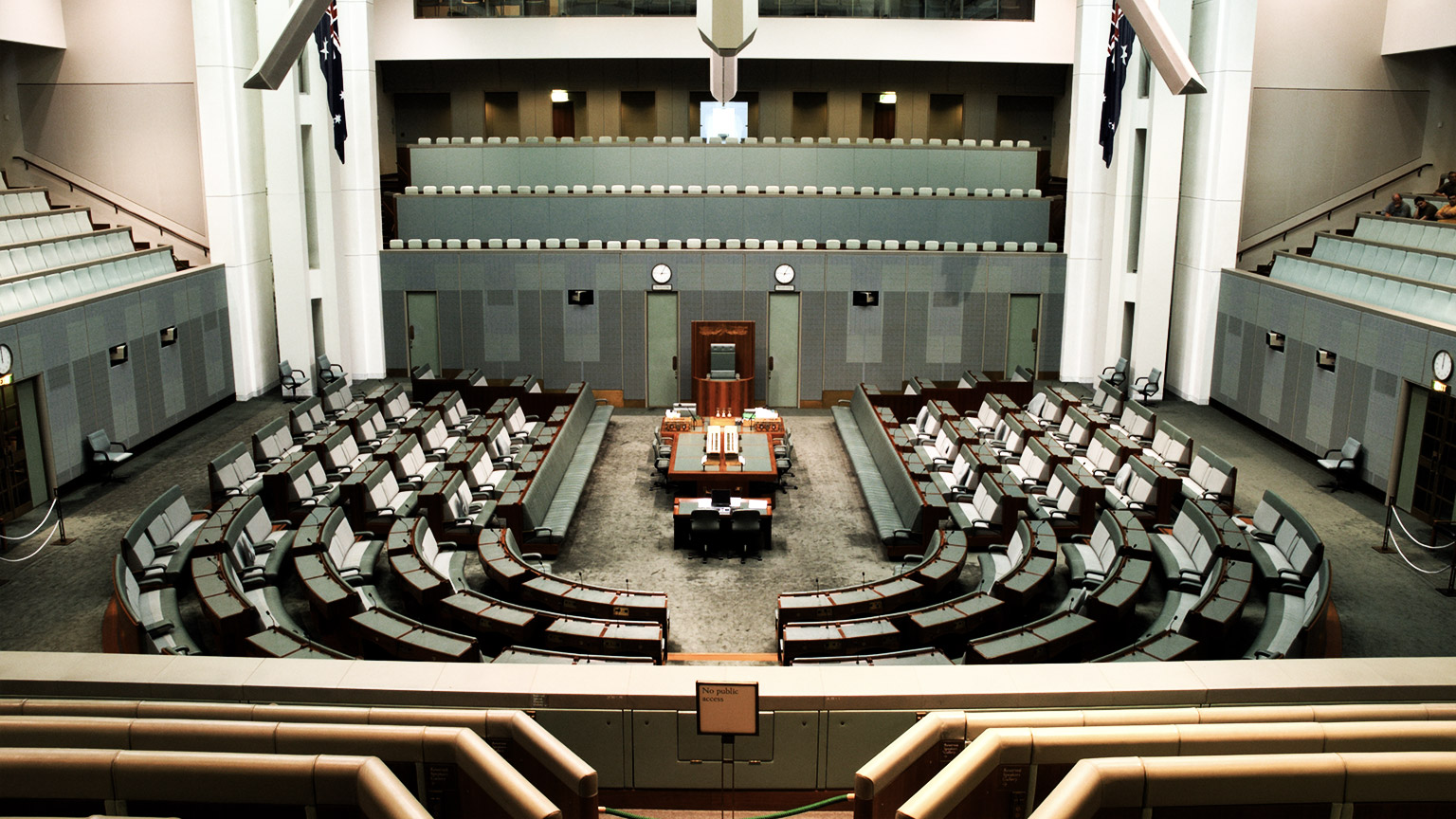This chapter looks at the legal system in Australia relating to child abuse and neglect, including relevant legislation, authorities and requirements that you will need to be aware of when working with young people.
By the end of this chapter, you will understand:
- The basics of the Australian legal system relating to child abuse and neglect
- Child protection laws and legislation in Australia, including:
- Child protection legislation and authorities
- Statutory requirements in relation to child protection
- Duty of care requirements
- How to respond to suspicions of child abuse within relevant legislative requirements
- Working within your own job role and level of responsibility in relation to child abuse and neglect
Duty of care is a part of common law (i.e. there is no ‘Duty of Care Act’).

We will take a brief look at our legal system so that you can understand the legal context for child protection laws in Australia.
In Australia’s legal system, there are two kinds of law:
- Legislation
- Common law
Let's look at a video explaining the Australian Legal System and how it works. This will help to understand how the National Law and State/ Territory Regulations have been created to govern the early childhood sector.
When looking at the Australian Legal System and how it governs the early childhood sector, the sector is required to adhere to the following:
- The National Law
- The State Regulations
Each state and territory must abide under the National Law and the State Regulations. For example, when looking at Child Protection, under the regulations, Regulation 84 requires all educators to have an understanding of the child protection law and their obligations under the requirement.
84 Awareness of child protection law
The approved provider of an education and care service must ensure that nominated supervisors and staff members at the sevice who work with children are advised of-
(a) the existence and application of the current child protection law; and
any obligations that they may have under that law
Penalty: $1000.
Note: A compliance direction may be issued for failure to comply with this regulation.
Note
There is a misconception that all staff are required to have a child protection certificate to work with children. The regulation states that all staff must have an understanding of the obligation but the only staff members that are required to have a certificate is educators that are acting as a responsible person, the nominated supervisor and the approved provider. Authorised officers when they are visiting service may ask to see educators' child protection certificates and ask questions relating to the service's policy or procedure around child protection.
The Law regarding Child Protection in Australia
Children and Young Persons (Care and Protection) Act 1998 (Wood Amendmnet 2009)
The Act and why it was amended?
The Wood Enquiry into the horrific deaths of children in abusive situations, who eventually died forced the government to realise that Child Protection needed more than one agency to prevent these unnecessary deaths.
Two high-profile cases - those of the girl known as Ebony, who died of starvation, and Dean Shillingsworth, who was thrown into a pond stuffed inside a suitcase, helped trigger the Wood special commission of inquiry into child protection services in 2009.
Key Features of the 2009 Amanded Act
- Safety, welfare and well-being of child paramount
- Least intrusive intervention
- Principle of participation of children and young people
- Risk of harm
- Partnership
- Early intervention
- Mandatory reporting
If removed, names, identity, cultural and religious ties are preserved and family contact maintained
Children Legislation Amendment (Wood Inquiry Recommendations) Act 2009 Copy of the Act:
The Act provides for reports being made about:
- Children and young people at risk of significant harm
- Harm unborn children at risk of significant harm
- Homeless children and young people.
DOCS - Department of Child Services
DOCS was previously the sole support agency for Child Protection. After the deaths of two young children where multiple reports had been made and the young children still died led to 2009 amendments to Child Protection.
DOCS is now replaced by Department of Communities and Justice.
In relation to protecting children, systems were put in place to share information amongst organisations to track/monitor/ help children at risk and prevent the deaths of children in abusive situations. By having access to shared history of children, several agencies can work collaboratively to prevent a child staying in an unsafe and unfit environment.
The emphasis is now on shared information and removing the risk, rather than removing the child.
Child Story
“All children in NSW are healthy, happy and safe and grow up in families and communities where they have opportunities to reach their full potential”
Families are supported at a local level in a co-ordinated approach by relevant agencies, including education and care settings. For more information:
A Child’s Story (previously named Keep Them Safe)
This reporting approach was developed in 2009. The government developed a range of shared approaches to child safety and wellbeing in NSW. It was recommended that a number of agencies responsible for child protection in Australia. The Government's five-year (2009-14) action plan to re-shape the way family and community services are delivered in NSW to improve the safety, welfare, and wellbeing of children and young people.
Case Study
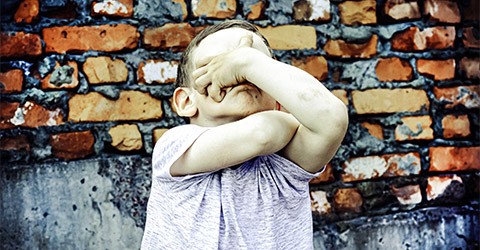
Cooper is five years old, He is usually a very happy and busy child who participates in a range of activities and interacts with many different children in small groups. He has attended your centre for over a year and you know him very well. Cooper’s mum is a single parent and has recently started socialising much more, often leaving Cooper with relatives and friends. Today when Coopers arrives at your centre, he is crying. He had stayed at his uncle’s house overnight while his um when out. Cooper's uncle smells of alcohol and doesn’t talk to you or any of the other educators. Cooper settles once his uncle leaves, but Cooper chooses to sit alone and screams at the other children if they go near him.
Note
- What uncharastic behaviour indicates that Cooper could have suffered abuse?
- As an educator, and as a Mandatory Reporter, what do you do next?
Duty of care is a part of common law (i.e. there is no ‘Duty of Care Act)
Because Australia is a federation of states and territories, each of which has its own parliament, there may be different laws in different states/territories.
Each state has it’s own laws on Child Protection. Federal or Commonwealth laws apply to the whole country, and if there is a conflict between a state/territory law and a federal/Commonwealth law, the federal/ Commonwealth law usually predominates. Each state and territory has its own child protection legislation, so you will need to refer to the relevant Acts (statutes) for your own state/territory.
For more information on the reporting guides for each state and territory check out AIFS Mandatory reporting of child abuse and neglect resource sheet.
There are some differences in these laws between states/territories. There is no overriding federal law relating to child protection.
Who is a Mandatory Reporter?
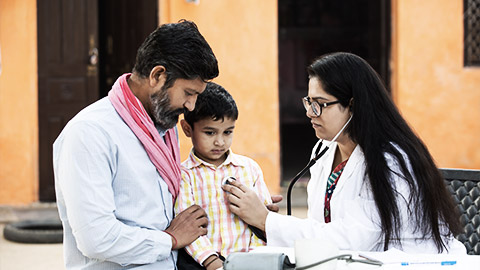
Mandatory reporters are people who deliver the following services, wholly or partly, to children as part of their professional work or other paid employment, and those in management positions in these services:
- Families are supported at a local level in a coordinated approach by relevant agencies, including education and care settings.
- Health care — registered medical practitioners, specialists, enrolled and registered nurses, registered midwives, occupational therapists, speech pathologists, psychologists, dentists and other allied health professionals working in sole practice or in public or private health practices.
- Welfare — registered psychologists, social workers, caseworkers and youth workers.
- Education — teachers, counsellors, principals,
- Children’s services — child care workers, family day carers and home-based carers.
- Residential services — refuge workers, community housing providers.
- Law enforcement — police.
- Disability services – disability support workers and personal care workers.
- A person in religious ministry or a person providing religion-based activities to children (e.g. minister of religion, priest, deacon, pastor, rabbi, Salvation Army officer, church elder, religious brother or sister)
- Registered psychologists providing a professional service as a psychologist to adults.
In NSW, mandatory reporting is regulated by the Children and Young Persons (Care and Protection) Act 1998 (the Care Act) and mandatory reporters are guided by the NSW Mandatory Reporter Guide.
Professional judgement should be used in deciding whether concerns about the safety, welfare or wellbeing of an unborn child or a young person warrant a report to the Child Protection Helpline.
Legislation requires that mandatory reporters continue to respond to the needs of the child or young person, within the terms of their work role, even after a report to the Child Protection Helpline has been made (s.29A of the Care Act). There are now a variety of ways you can make a report to the Child Protection Helpline if you suspect risk of significant harm.
Leadership Responsibilities in Early Childhood Environments

What are they?
Approved Provider
The approved provider is the legal entity that gets the approval for running a service and is legally responsible for managing the service.
As the approved provider, you have primary legal responsibility under the National Law and National Regulations to ensure good governance and management of your service.
Under the Law and Regulations the Approved Provider must:
-
S162A – The approved provider of an education and care service must ensure that each nominated supervisor and each person in day-to-day charge of the service has successfully completed the child protection training (if any) required by or under the law of this jurisdiction, a Government protocol applying to the approved provider in this jurisdiction or otherwise required by this jurisdiction
-
r84 - The approved provider of an education and care service must ensure that nominated supervisors and staff members at the service who work with children are advised of—
-
(a) the existence and application of the current child protection law; and
-
(b) any obligations that they may have under that law
-
-
r175 (2) – Prescribed information to be notified to the regulatory authority
-
(d)any incident where the approved provider reasonably believes that physical abuse or sexual abuse of a child or children has occurred or is occurring while the child is or the children are being educated and cared for by the education and care service;
-
(e) allegations that physical or sexual abuse of a child or children has occurred or is occurring while the child is or the children are being educated and cared for by the education and care service (other than an allegation that has been notified under section 174(2)(b) of the Law).
-
-

Duty of care is particularly important in relation to children and young people at risk of harm. You need to understand this concept and its implications for your work as well as for your everyday conduct.
Duty of Care and Negligence
What Is Duty of Care?
Australian common law imposes a ‘duty’ on all of us to take ‘reasonable care’ that our actions do not cause foreseeable harm or injury to others. In daily life, we should behave sensibly when we are around other people and avoid causing harm to others by being careless.
Note
Everyone in society can uphold duty of care by watching where they are going and avoiding bumping into others when they are walking down the street or by obeying the road rules when they are driving a car.
As an early childhood employee, you sign a contract that bines you to a duty of care that requires you to report any suspicions of abuse against children.
Duty of care extends to the role of workers in relation to child protection.
What Is Negligence?
Negligence is another word for carelessness. To be negligent means to fail in your duty of care by acting carelessly and causing harm to others.
Note
If you are walking down the street reading text messages on your mobile phone and not paying attention to where you are going and you bump into a person and knock them down, you have been negligent. If the person is injured as a result of your carelessness, they can sue you for compensation.
In the context of child protection, if you are aware of indications that a child has been harmed and you fail to meet legislative or practice requirements for reporting this and for safeguarding the child, this is likely to be counted as negligence.
The Legality of Duty of Care and Negligence
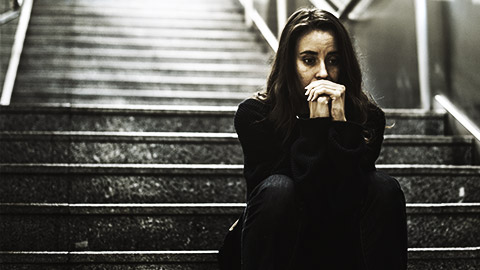
Duty of Care Relationship
A duty of care relationship exists whenever one person’s actions may reasonably be expected to affect another person. The key word here is ‘reasonably’ – we are not expected to predict unlikely or unusual outcomes of our actions.
Standard of Care
The general ‘standard’ for duty of care is how a ‘reasonable person’ would be expected to behave in each situation.
This sets a minimum standard of care, but there is no simple formula or precise legal definition of a ‘reasonable person’. What is considered ‘reasonable behaviour’ can change over time and from one situation to another and can vary across cultures.
Standards of care may be applied differently according to the role and status of the person, the context and the circumstances. For example, the standard of reasonable behaviour for an adult is usually higher than the standard for a child. The standard of care expected of a surgeon in treating a patient is higher than that of a first responder. Workers in community services are usually expected to have more skills and knowledge than their clients in relation to their job roles, so a higher standard of care applies to them.
Breach of Duty of Care
For legal action to be taken, a breach of duty of care must have occurred. This means that one person must have done something, either intentionally or unintentionally, that failed to meet a relevant standard of care. For example, a worker who has failed to follow a particular procedure or has overlooked a task that is part of their normal duties has failed in their duty of care.

Harm, Injury and Loss
Unless someone has sustained harm, injury or loss as a result of another person’s careless or negligent actions, there is no basis for legal action.
In most cases, harm, injury or loss will be physical or economical, but intangible harm, such as psychological damage and emotional distress, loss of status and damage to reputation, may also be included.
Legal Action for Negligence
Legal action for compensation following negligence is conducted through the civil courts. Breaching your duty of care is not a criminal offence unless it also involves a criminal offence, such as assault or theft. There is no ‘Negligence Act’ or ‘Duty of Care Act’ – negligence and duty of care are part of common law.
For more information about duty of care, explore the following links:
- ‘What Is Duty of Care?’ from Slater Gordon Lawyers
- ‘Negligence’ from the Legal Services Commission of South Australia
- ‘What Is the Tort of Negligence?’ from Etheringtons Solicitors
- ‘Duty of Care’ from Shine Lawyers
The child protection system in Australia includes:
- Child protection legislation
- Child protection authorities
- Child protection and support services
The overriding principle is that the welfare and best interests of the child are paramount. This includes the understanding that within a child’s family is the best place for a child to be cared for, so removing a child from their family should happen only as a last resort. Supporting the family to care for the child is preferable to removal. However, a child who is at risk of immediate harm may be removed to a place of safety. In Australia, state/territory governments have the responsibility for statutory child protection.
The diagram found at the following link gives an overview of the child protection system in Australia and the processes that occur when a child is identified as being at risk of harm:
Child protection Australia, 2021-2022 by the AIHW
For an overview of child protection in Australia in 2018–2019, read the summary of the AIHW report at the following link:
'Child Protection Australia 2021-2022: Summary' from the AIHW
The National Framework for Protecting Australia’s Children

The National Framework for Protecting Australia’s Children 2021–2031 is intended to coordinate the state/ territory responses to children at risk of harm and to apply a public health model with the aim of preventing abuse and neglect through early intervention.
Safe & Supported: the National Framework sets out a national 10-year framework to improve the lives of children, young people and families experiencing disadvantage or who are vulnerable to abuse and neglect.
Safe & Supported: the National Framework priority groups:
- children and families with multiple and complex needs
- Aboriginal and Torres Strait Islander children and young people experiencing disadvantage or who are vulnerable
- children and young people and/or parents/carers with disability experiencing disadvantage or who are vulnerable children and young people who have experienced abuse and/or neglect, including children in out-of-home care and young people leaving out-of-home care and transitioning to adulthood.
Learn more about the underpinning principles of the framework at the following link:
National Framework for Protecting Australia’s Children 2021-2031 from the Australian Department of Social Services
Note
A key principle of the framework is that everyone has a role to play in keeping children safe and that child protection is a community and societal responsibility.
As stated previously, each state/territory has its own child protection laws and authorities.
For more information about the relevant pieces of legislation, visit the following links
'Australian Child Protection Legislation' from the Australian Institute of Family Studies (AIFS)
Child protection legislation by jurisdiction from the AIHW
Note
For a comprehensive overview of child protection legislation in Australia as well as useful resource sheets on a range of topics relevant to child protection, visit the following link:
Child protection overview by AIHW

The word ‘mandatory’ means that something is authorised, required and made compulsory by law. Child protection legislation identifies certain occupations in which reporting concerns about children at risk of abuse or neglect is mandatory.
There are some variations across states/territories regarding what must be reported and who must report it.
In addition to mandatory reporting, voluntary reporting is possible, and a person who makes a voluntary report receives the same protections regarding confidentiality and legal liability as someone who is legally mandated to report.
How do you know if you are a Mandatory Reporter?
Certain groups of people are required by law to report to community services if they suspect, on reasonable grounds, that a child or young person is at risk of significant harm. Criminal penalty for mandatory reporters failing to report has been removed.
Mandatory reporters are people who deliver the following services, wholly or partly, to children as part of their paid or professional work:
- Health care (e.g. registered medical practitioners, specialists, general practice nurses, midwives, occupational therapists, speech therapists, psychologists, dentists and other allied health professionals working in sole practice or in public or private health practices)
- Welfare (e.g. psychologists, social workers, caseworkers and youth workers)
- Education (e.g. teachers, counsellors, principals)
- Children’s services (e.g. childcare workers, family day carers and home-based carers)
- Residential services (e.g. refuge workers)
- Law enforcement (e.g. police)
Next, watch a video explaining the role of a mandatory reporter.
What are some examples of Reporting Requirements?
- Serious Incidents
- Serious Complaints (about a child, family or education and care service)
- Physical or sexual abuse allegations or incidents
- Identifying or responding to sexualisied behaviour
State and territory working with children screening units:
As well there are reporting requirements that may see you needing to contact your state to territory regulatory authority. Some examples may include
- serious incidents
- complaints
- circumstances at which the service pose a risk to the health, safety or wellbeing of children
- any incident or allegation that physical or sexual abuse of a child or children has occurred or is occurring
As well some of these reportable offences have a time requirement on when you must notify the regulatory authority. For more information check out the ACECQA page on the National Quality Agenda IT System.
Guide to the NQF
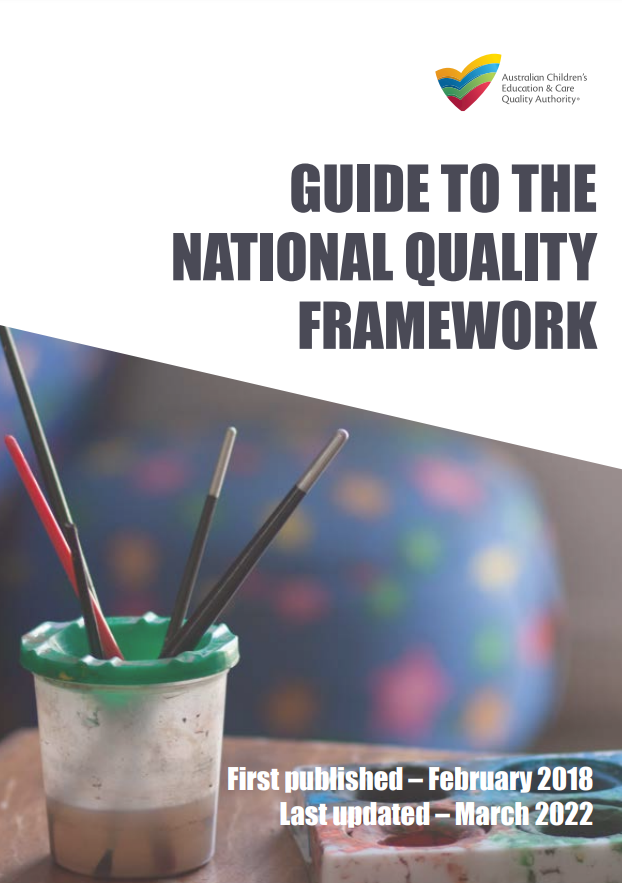
For more information about Reporting information to the Regulatory Authority check out
- Quality Area 7- Governance and Leadership.
- 7.3 Reporting information to the Regulatory Authority.
Guide to the NQF
Section 4 Operational requirements
7.3 Reporting information to the regulatory authority
Information about the approved provider and service
The approved provider must notify the regulatory authority that granted the provider approval if any of the events below occur in relation to the approved provider or each approved service. Applications and notifications can be submitted online using the National Quality Agenda (NQA) IT System at www.acecqa.gov.au.
Listed in the guide is
- Circumstances that must be notified to the regulatory authority
- Serious incidents, change or circumstances and complaints to notify
- Examples of serious incidents
- Definition of abuse that needs to be notified
As well the Guide provides more detail and information around Child Protection and how being a Mandatory Reporter connects with the roles and responsibilities of an Early Childhood Educator.
Guide to the NQF
Section 4 Operational requirements
2.4 Child protection
The approved provider must ensure:
- each nominated supervisor and person in day-to-day charge of the service has successfully completed the child protection training (if any) required in their state or territory – child protection training may be required under a state or territory law, a government protocol or under another instrument such as a state government memorandum of understanding
- the nominated supervisors and staff members at the service who work with children are advised of the existence and application of the current child protection law in the relevant jurisdiction and understand their obligations under that law
- policies and procedures are in place in relation to providing a child safe environment.
Authorised officers may ask for evidence that child protection training has been completed, for example a course completion certificate. Authorised officer may also ask the approved provider how they ensure educators and staff are aware of the current child protection law and their responsibilities, such as by attending regular refresher training or in-house workshops, completing online training, or by other ways. Formal child protection training is not available in all states and territories, so approved providers may use other methods to meet this requirement, such as distributing information to staff and discussing obligations.
It is also an offence under the National Law to subject a child being educated and cared for by an approved service to any form of corporal punishment, or any discipline that is unreasonable in the circumstances. See Governance and leadership for information on reporting to the Regulatory Authority, including physical and sexual abuse.
The following link provides further information about mandatory reporting requirements:
'Mandatory Reporting of Child Abuse and Neglect' from the AIFS
For additional information about reporting requirements check out the ACECQA website for more information.

Q1: What is the meaning of legislation and common law.
Common law or case law is law as declared by judges. Legislation is the primary source of law today and all cases start with interpreting the legislation as made by Commonwealth and the States. There are a few notable exceptions to this rule that are common law jurisdictions.
Q2: In regards to child abuse, what are your duty of care requirements as an early childhood employee?
Australian common law imposes a ‘duty’ on all of us to take ‘reasonable care’ that our actions do not cause foreseeable harm or injury to others. In daily life, we should behave sensibly when we are around other people and avoid causing harm to others by being careless.As an early childhood employee, you sign a contract that bines you to a duty of care that requires you to report any suspicions of abuse against children. Duty of care extends to the role of workers in relation to child protection.
Q3: Provide an example of when an educator may be found to be negligent in their handling of suspected child abuse.
A few examples include: Not reporting a parent or family due to being friends with them, ignoring a child when they disclose information relating to child protection, failing to report suspected abuse to the centre director or regulatory authority, and failure to comply with the services child protection policy and procedure.
Q4: What does mandatory reporting refer to, and who is a mandatory reporter.
The word ‘mandatory’ means that something is authorised, required and made compulsory by law. Child protection legislation identifies certain occupations in which reporting concerns about children at risk of abuse or neglect is mandatory. There are some variations across states/territories regarding what must be reported and who must report it. In addition to mandatory reporting, voluntary reporting is possible, and a person who makes a voluntary report receives the same protections regarding confidentiality and legal liability as someone who is legally mandated to report. Mandatory reporters are people who deliver the following services, wholly or partly, to children as part of their paid or professional work: Health care (e.g. registered medical practitioners, specialists, general practice nurses, midwives, occupational therapists, speech therapists, psychologists, dentists and other allied health professionals working in sole practice or in public or private health practices) Welfare (e.g. psychologists, social workers, caseworkers and youth workers) Education (e.g. teachers, counsellors, principals) Children’s services (e.g. childcare workers, family day carers and home-based carers) Residential services (e.g. refuge workers) Law enforcement (e.g. police)
